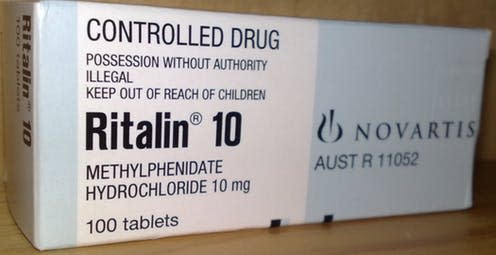In Depth Out Loud podcast: Ritalin – the biography of a mercurial medicine

In this episode of The Conversation’s In Depth Out Loud podcast, we bring you the history of Ritalin by Matthew Smith, professor in health history at the University of Strathclyde.
Just over 75 years ago, a new stimulant drug with the generic name of methylphenidate was born in the Swiss lab of chemical company Ciba. Like many drugs, its therapeutic purpose was unclear. But these were the days a scientist could take a drug home and test it on their spouse, which is exactly what Ciba scientist Leandro Panizzon did.
Panizzon’s wife, Rita, reported that the drug gave her tennis game a real fillip. And so Panizzon originally named the drug Ritaline in his wife’s honour.
Over the next three-quarters of a century, Ritalin would go on to wear many hats, including as an antipsychotic, a tonic for worn-out housewives, a drug to treat disruptive children, and a street drug and smart drug.
But what does the future hold?
You can read the text version of this in depth article here. The audio version is read by Annabel Bligh and edited by Laura Hood.
The music in In Depth Out Loud is Night Caves, by Lee Rosevere. A big thanks to the Department of Journalism at City, University of London for letting us use their studios to record.
This article is republished from The Conversation under a Creative Commons license. Read the original article.

Matthew Smith receives funding from the Wellcome Trust and the Arts and Humanities Research Council.




